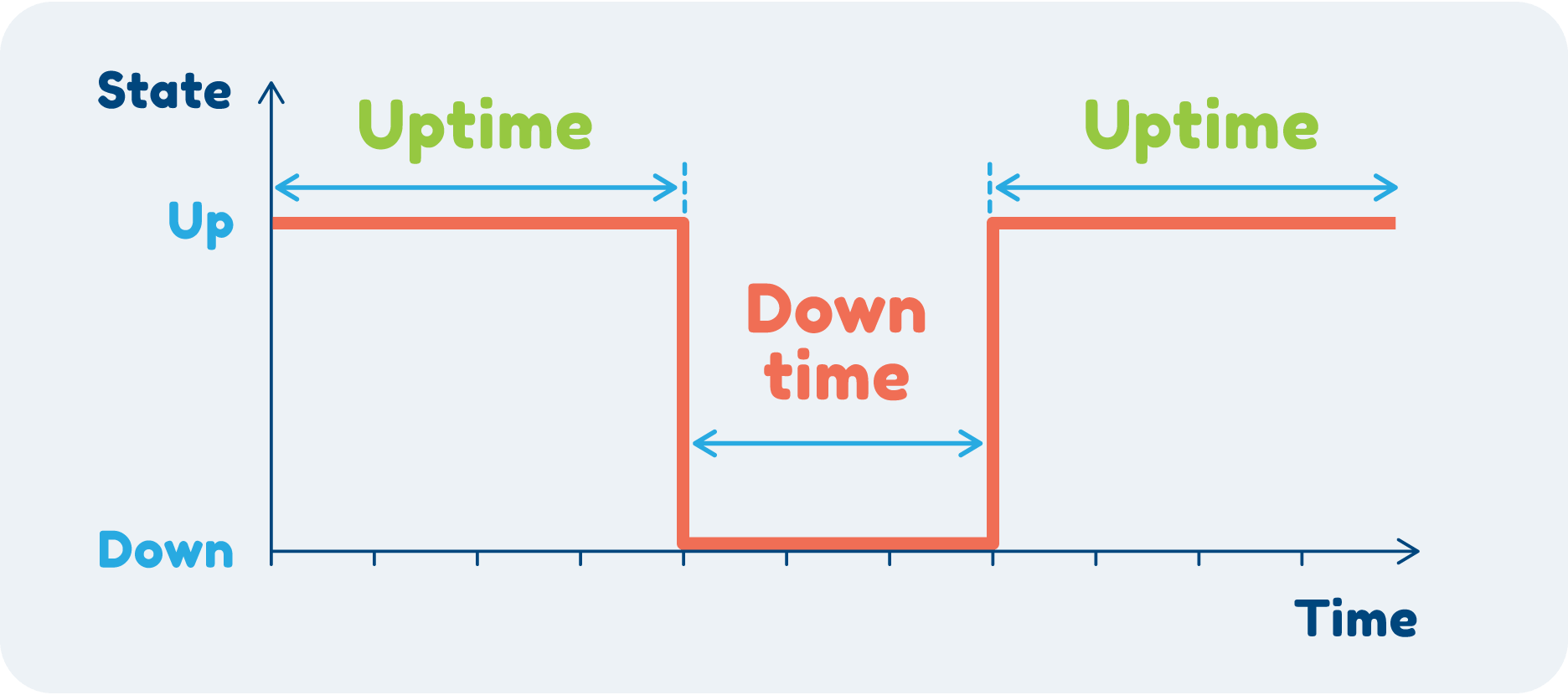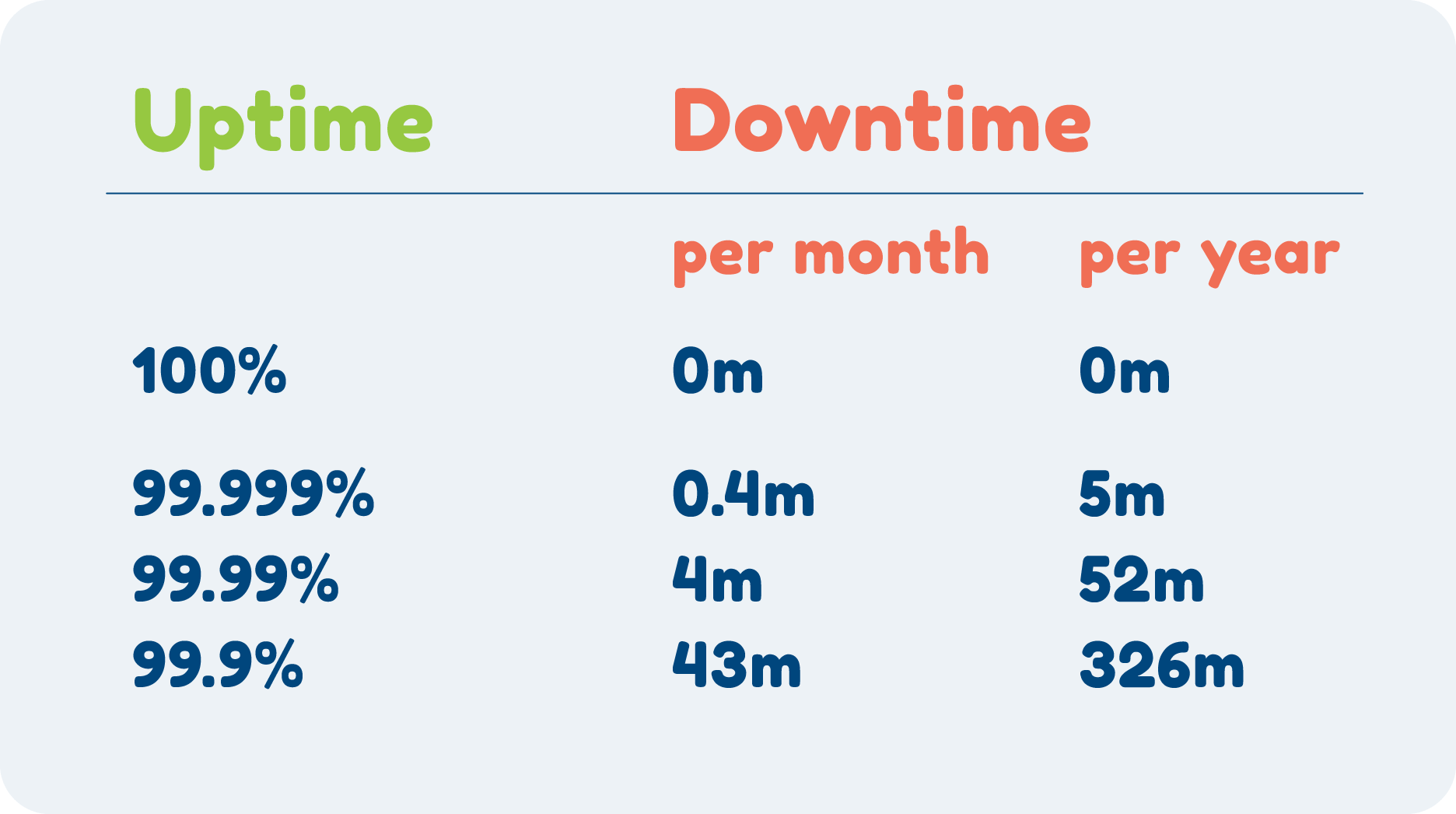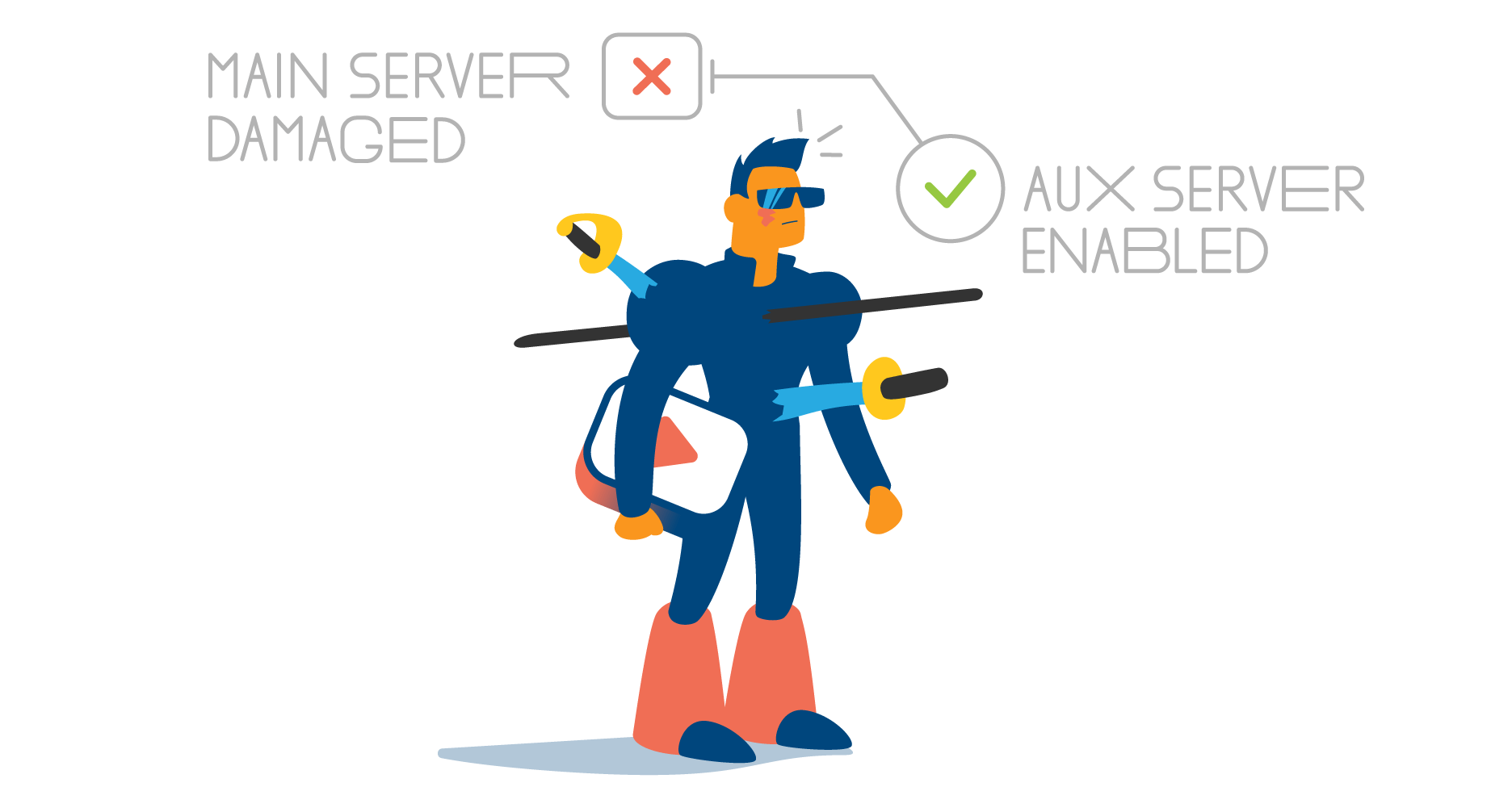

How To Achieve 99.999% availability with Multi-DRM
In the competitive OTT industry, platforms aspire to achieve a 99.999% availability. But how can the right DRM make it happen? Find the answer in this article.
Digital Rights Management (DRM) technology is a top concern for media business. According to our State of Content Protection Technologies report, 65% of media businesses consider DRM solutions are extremely important or very important.
Most (if not all) streaming companies need their media delivery services to work 24/7. This involves finding a DRM service provider that offers maximum availability and scalability while maintaining a low turn-around time. Below you can learn more about how high availability works and content platforms can achieve a 99.999% of availability.
Understanding uptime and downtime
High availability (HA) is a characteristic of a system that can fulfill a certain performance level, which is usually uptime, for a certain period of time without failing. While high availability is measured with percentages, it can also be measured in terms of time, which is known as uptime. The opposite of a system with high availability would be a system experiencing downtime, a metric used to measure the time during which a system cannot function. The measurement units used by both uptime and downtime are days, hours, minutes, seconds, etc.

As systems became more complex and dealt with thousands (even millions of users), there was a need for a legal document to set a target values for all service characteristics, one of them being the system availability. This document is called Service Level Agreement, or SLA for short, has unfortunately become a synonym of HA while talking about system availability but it is not exactly the same since it can convey more system elements.
The nines, or why 99.99% availability is not the same as 99.999%
As stated before, both uptime and downtime are measured in time units. Therefore it is possible to estimate how much we can expect a system to fail depending on its rate of availability. Since many of these rates are over 98%, discussing availability is also known as defining “the nines”. “Five nines” means that a system has a 99.999% rate, “four nines” is 99.99%, “three nines” is 99.9% and so on. The difference in service availability between five, four, and three nines can be bigger than you think as seen below.

Availability in the streaming and OTT industry works in the same way as six sigma does in the manufacturing industry. The goal of six sigma is to reduce production errors, so the defect rate is so small that they are counted in the parts per million. A DRM system with 99.99% availability means that we can expect the system to have a maximum downtime of 4 minutes per month, or 52 minutes in total every year. A service with 99.999% of guaranteed availability, such as Axinom DRM, decreases potential downtime to just 0.4 minutes per month or 5 minutes per year.
It is important to note that many service providers do not count maintenance downtime while calculating their uptime numbers. Yet the difference between 99.99% and 99.999% availability is critical for companies who rely on delivering media to their customers and keeping them online to make money. In a highly competitive market, every second of downtime counts. If a streaming service is down, customers cannot access its media and may jump off to another service to watch.
Example of a DRM service workflow
There are many ways to approach the architecture of a DRM service. In one typical use case, the license services generate and issue DRM licenses upon request, and regulate user acces with unique organization-specific credentials. The system forwards incoming license requests made by clients through a proxy server. The license proxy server then validates the client license requests, appends business rules, and delivers the DRM licenses generated.
In this case example, you may notice that this license proxy mechanism relies completely on the uptime of a single server provider. If there is an outage, then the system will experience licensing and subsequent playback errors. A solution to this problem would be to use two independent DRM services, but it is important to make sure that neither employs the same server provider (or both will fail if the service goes down).

Axinom DRM: a DRM Solution with a Failover Approach
As previously mentioned, you need to think about redundancy if you want your services to run smoothly 99.999% of the time. Axinom DRM helps clients achieve this by having its own Axinom-built server for licensing services, which can run in parallel to Google Widevine DRM for example. Axinom DRM provides a failover approach since it is a multi-DRM that integrates a load balancer to select which node creates the DRM license for each client request.
The load balancer of Axinom DRM can detect in fractions of a second if a node—even a group of nodes—goes offline and can re-route further requests to the nearest available one. This is done automatically until the offline node goes back online, thus reducing the chance of playback errors. You can learn more on the capabilities of Axinom DRM in the Technical Details section of its product page.
To further reinforce this failover approach and prepare a platform to deliver content that is in high demand on a certain date, Axinom customers can opt to use our Hypercare services. Axinom Hypercare is an excellent choice for a significant live event, since we will assign engineering support staff who will be on standby for the duration.
As you can see, video platforms aspiring to achieve a 99.999% availability need to choose a trustworthy multi-DRM service. Only by doing so, platforms can fulfill incoming license requests even if there is a server outage, deal with peak demand during live content streaming, and avoid playback errors.








